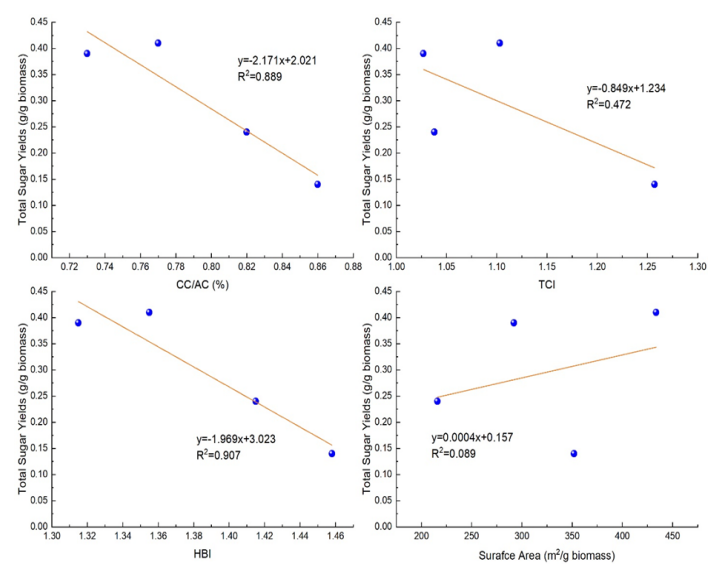The Effects of Sequential Hydrothermal-Mechanical Refining Pretreatment on Cellulose Structure Changes and Sugar Recoveries
Themes: Conversion
Keywords: Biomass Analytics, Economics, Hydrolysate
Citation
Cheng, M.H., Maitra, S., Carr Clennon, A.N., Appell, M., Dien. B.S., Singh, V. Oct. 12, 2022. “The Effects of Sequential Hydrothermal-Mechanical Refining Pretreatment on Cellulose Structure Changes and Sugar Recoveries.” Biomass Conversion and Biorefinery. DOI: 10.1007/s13399-022-03359-3.
Overview

The recalcitrance of lignocellulosic biomass necessitates an efficient pretreatment protocol for operating a successful cellulosic biorefinery. It is critical to improve cellulose accessibility for hydrolysis and fermentation by altering the plant cell wall’s physical structure and chemical composition. Sequential hydrothermal-mechanical refining pretreatment (HMR) allows efficient recovery of cellulosic sugars without utilizing any hazardous chemicals. HMR has been successfully applied to Liberty switchgrass, a bioenergy cultivar released by the USDA, and now it is being applied to oilcane, a recently developed transgenic sugarcane variety engineered to accumulate lipids in its vegetative tissues. Sugar yields of oilcane bagasse (OCB) and switchgrass (SG) treated with HMR are 96.4% and 75.4%, respectively. This study sought to correlate cellulosic sugar yields with structural changes within the cell wall caused by HMR on two distinct bioenergy crops. Simon’s staining technique for the specific surface area analysis showed that HMR increased the specific surface area of pretreated biomass residues by 80-112%. In addition, ATR-FTIR was performed to determine the effects of HMR on physical structures based on the total crystallinity index (TCI) and hydrogen bonding intensity (HBI). Irrespective of biomass type, HMR decreased the initial crystalline cellulose contents of untreated biomass residues by 3.5% and reduced TCI and HBI by 7-13%. The study found that sugar yields were negatively correlated to reducing values of hydrogen bonding intensity, crystalline cellulose content, and total crystallinity index.
Data
- Sugar recoveries
- Surface area
- Glucose structure correlations